


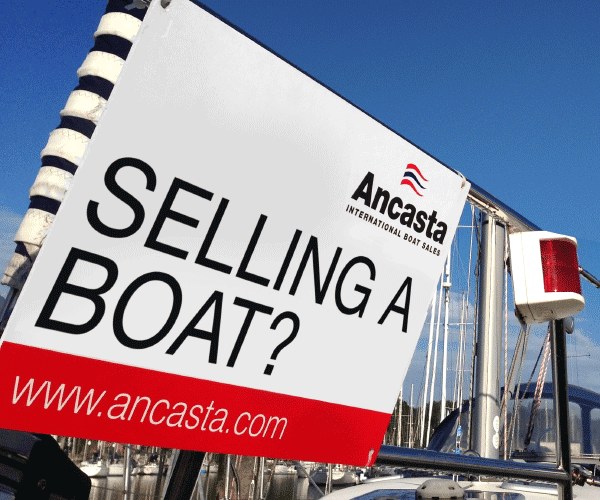

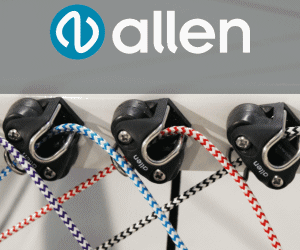
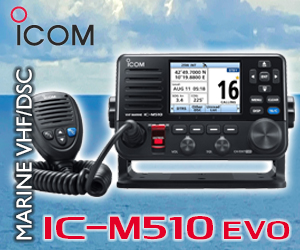
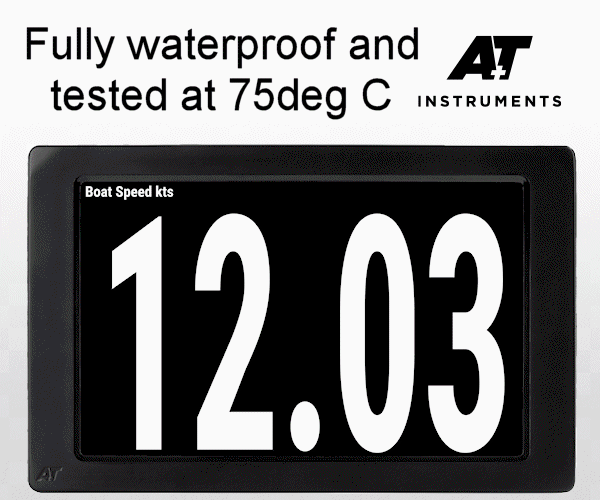





Boats for sale
| Laser 140101 Tynemouth |
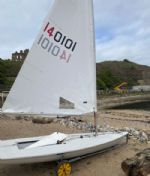 |
| Laser 28 - Excellent example of this great design Hamble le rice |
 |
| Rossiter Pintail Mortagne sur Gironde, near Bordeaux |
 |
List classes of boat for sale |
Symmetric v Assymmeric Spinnakers |
Post Reply 
|
Page 123 9> |
| Author | ||
iGRF 
Really should get out more 
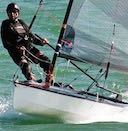
Joined: 07 Mar 11 Location: Hythe Online Status: Offline Posts: 6499 |
 Post Options Post Options
 Quote Quote  Reply Reply
 Topic: Symmetric v Assymmeric Spinnakers Topic: Symmetric v Assymmeric SpinnakersPosted: 13 Aug 13 at 9:26am |
|
|
I watched a very slick video from yesterday of a 505 being gybed with those two poles, and there is a discussion in the Hornet thread, which maybe prompted this thought, and mention about fireballs havign a problem getting going on the new tack after a gybe in lighter air which has prompted this post.
Now, I'm assuming all Assym kites are designed rightly with a leading and trailing edge as per most sails, i.e. with an entry and an exit by means of a leech with some degree of twist. So my question how can it be efficient, that a symmetric spinnaker has to reverse the flow at every gybe and the trailing edge becomes the leading edge. I've never used them, wouldn't, they seem a)dated and b)inefficient at anything other than dead running, plus to difficult to bother with anyway with all that pole switching, bagging and nonsense. So why why why persist with them? Somebody tell me, why keep these anachronisms going rather than work a bit harder on developing Assyms to sail dead downwind if need be, a la Alto? There has to be something else I'm missing, care to share it with me? Edited by iGRF - 13 Aug 13 at 9:28am |
||
 |
||
jeffers 
Really should get out more 

Joined: 29 Mar 04 Location: United Kingdom Online Status: Offline Posts: 3048 |
 Post Options Post Options
 Quote Quote  Reply Reply
 Posted: 13 Aug 13 at 9:28am Posted: 13 Aug 13 at 9:28am |
|
|
There is an art and a sense of tremendous satisfaction when you 'get it right' with a symmetric kite. I find an assymetric is nowhere near as rewarding as t is just too easy to get the boat going.
Symmetric will shows up any flaws in technique and makes you work hard to sort them out.
|
||
|
Paul
---------------------- D-Zero GBR 74 |
||
 |
||
iGRF 
Really should get out more 

Joined: 07 Mar 11 Location: Hythe Online Status: Offline Posts: 6499 |
 Post Options Post Options
 Quote Quote  Reply Reply
 Posted: 13 Aug 13 at 9:30am Posted: 13 Aug 13 at 9:30am |
|
|
What like cranking an old car with the handle and it starts first time?
|
||
 |
||
getafix 
Really should get out more 

Joined: 28 Mar 06 Location: United Kingdom Online Status: Offline Posts: 2143 |
 Post Options Post Options
 Quote Quote  Reply Reply
 Posted: 13 Aug 13 at 9:45am Posted: 13 Aug 13 at 9:45am |
|
|
IMO, symmetric kites continue to be popular in many classes due to their suitability to a wide range of course angles and length of course legs in club racing / open circuits.
For sure, there is work to do, IMO, on the whole question of assy design, pole systems etc.. for sure, many assy systems are a result of less than exhaustive testing and experimentation, but in that they are matched by many of the traditional classes using symmetric kites, they were simply used by the designers because that was what was available at the time and the original systems were not greatly optimised either. If time and money were no object, I'd like to see a couple of things trialed over the same course, one which had all 'common' angles represented i.e. beat, fetch, beam reach, broad reach, run... RS200 with symmetric kite versus current assy set-up MR with assy kite versus current sym set-up RS400 with sym kite versus current assy set-up Alto with fixed pole versus swinging versus sym-kite FB with assy kite versus sym kite ... in the ideal world, you'd end up with timed runs on each angle, using the same crew and with the same wind strengths, would be interesting to see the results
|
||
 |
||
JimC 
Really should get out more 

Joined: 17 May 04 Location: United Kingdom Online Status: Offline Posts: 6662 |
 Post Options Post Options
 Quote Quote  Reply Reply
 Posted: 13 Aug 13 at 10:24am Posted: 13 Aug 13 at 10:24am |
|
You're right of course, it can't be efficient. However I suspect its not *quite* as bad as if might be, because the pole tends to pull the luff down and the leech flies free, so there may be a degree of bringing the fullness a bit more forward with that.
Going dead downwind is never fast, but I suspect people do it a lot less than they think. Its been bemusing me on my canoe that I can be on a deep reach on one gybe, with the windex looking to be apparently along the centreline of the boat, then I gybe 45 degrees onto the other gybe to make the mark, and the windex seems to be still on the centreline. Don't know if its optical illusion or what. The only time dead downwind is fast is if you lose less time running than two gybes are going to take... On the other hand, and its a big on the other hand, its very easy to lose a whole bunch of time by setting off on the wrong gybe or at the wrong angle, even both. So whilst sailing the right angles is faster for a good crew, sailing the wrong angles can be a lot slower for a less expert one. So I suspect a lot of the prejudice about sailing angles is developed through lack of the specific skills... Not that I'm saying I've got that level of skill, just that I can recognise the need for it! And its no trivial level of skill when you consider that the optimum angle changes every time the wind strength changes. I guess, thinking about it, I'm not sure where the need for Alto type systems, even if they really work, exists, given dinghies with a single downwind sail. In class racing under rules that permit both people will use whichever is faster, which to date has been universally the sprit kite. In handicap racing sooner or later the handicapper will sort it out, and to be quite honest its never going to make much difference, because as soon as you are nearly square and the apparent wind is well behind the beam the law of diminishing returns set in because every increment in speed is a decrement in apparent wind: you can't go much faster than about 2/3 or 3/4 wind speed no matter how big or efficient the rags are. I don't know that you really need complicated two boat testing to establish pros and cons. Must be possible by now to get some sort of dinghy sized windspeed and direction measurement at the mast head, and that, used together with GPS to develop real polar diagrams, is most of what you need to stablish what works. It would be a sad day though if we were all sitting with speed and direction readouts and polar diagrams in our dinghies... |
||
 |
||
ifoxwell 
Really should get out more 
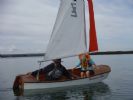
Joined: 05 Jan 06 Location: Hoo Online Status: Offline Posts: 669 |
 Post Options Post Options
 Quote Quote  Reply Reply
 Posted: 13 Aug 13 at 10:39am Posted: 13 Aug 13 at 10:39am |
|
|
As Jim says. My understanding is that part of the art of flying a conventional kite is to make its sail form slightly asymmetric by use of the controls. Interestingly I find it much easier to see on a yacht than on a dinghy!
Ian |
||
|
RS300
|
||
 |
||
vscott 
Posting king 
Joined: 11 Apr 06 Location: United Kingdom Online Status: Offline Posts: 181 |
 Post Options Post Options
 Quote Quote  Reply Reply
 Posted: 13 Aug 13 at 10:40am Posted: 13 Aug 13 at 10:40am |
|
|
More like cooking a meal with fresh ingredients than putting a ready made in the oven. When you get it right the taste is so much better.
|
||
|
Mk IV Osprey 1314 Think Again

Kielder Water Sailing Club |
||
 |
||
Guests 
Guest Group 
|
 Post Options Post Options
 Quote Quote  Reply Reply
 Posted: 13 Aug 13 at 10:40am Posted: 13 Aug 13 at 10:40am |
|
|
I think it would be kind of cool, Jim...
Bethwaite identified the ratio of total sail area : total weight as being critical to downwind performance. If the ratio is less than 0.53, he claims that in sub-planing winds the boat will run square quicker than it will tack downwind (i.e. use a canting pole or symmetric kite). For a given all up weight this effectively puts a minimum limit on the area of a ‘proper’ asymmetric kite. All Bethwaite's asymmetric boats are designed to exceed this limit. IMHO there is also a maximum sensible kite size for RTC racing, which can be estimated by using a Sail Carrying Power : Total Sail Area ratio. If the ratio is less than 0.90 it is difficult to hold the kite on a reach. The only boats I have identified that meet both requirements (a boat that sails downwind like a true skiff but can also reach) are the 800 (just) and 29er. |
||
 |
||
THUNT 
Newbie 
Joined: 26 Nov 04 Location: United Kingdom Online Status: Offline Posts: 25 |
 Post Options Post Options
 Quote Quote  Reply Reply
 Posted: 13 Aug 13 at 10:45am Posted: 13 Aug 13 at 10:45am |
|
|
I remember doing a Merlin Salcombe Week back in the early nineties with one of the Merlins converted with an asymmetric, don't think it did any better or worse, however, I do believe it was a trial boat for what would become the RS400!
|
||
 |
||
alstorer 
Really should get out more 

Joined: 02 Aug 07 Location: Cambridge Online Status: Offline Posts: 2899 |
 Post Options Post Options
 Quote Quote  Reply Reply
 Posted: 13 Aug 13 at 10:56am Posted: 13 Aug 13 at 10:56am |
|
|
As far as I understand it, single luff kites (at least on the 18s) evolved from double luff ones, orginally being set on the same poles?
|
||
|
-_
Al |
||
 |
||
Post Reply 
|
Page 123 9> |
| Forum Jump | Forum Permissions  You cannot post new topics in this forum You cannot reply to topics in this forum You cannot delete your posts in this forum You cannot edit your posts in this forum You cannot create polls in this forum You cannot vote in polls in this forum |
Bulletin Board Software by Web Wiz Forums® version 9.665y
Copyright ©2001-2010 Web Wiz
Change your personal settings, or read our privacy policy
Copyright ©2001-2010 Web Wiz
Change your personal settings, or read our privacy policy











 Printable Version
Printable Version Delicious
Delicious Digg
Digg Facebook
Facebook Furl
Furl Google
Google MySpace
MySpace Newsvine
Newsvine reddit
reddit StumbleUpon
StumbleUpon Twitter
Twitter Windows Live
Windows Live Yahoo Bookmarks
Yahoo Bookmarks Topic Options
Topic Options